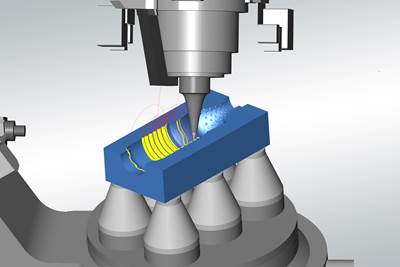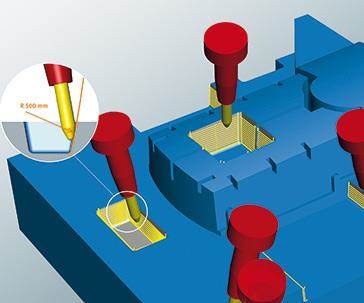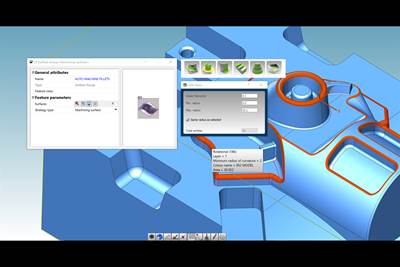
Machining Technology uses hyperMILL CAM software to generate smooth tool paths such as for the mold shown here. Photo Credit, all images: Open Mind Technologies
What would compel you to replace software that has been a working solution for more than 20 years? Following a particular process for this length of time provides a sense of security with known expectations each day. However, it does not always mean it is the optimal process, especially as it relates to manufacturing technology continually advancing to offer more innovations and options.
For the programmers of the mold department at Machining Technology in Brooklyn Park, Minnesota, who had been adeptly using a CAM software package for a couple of decades, some novel programming strategies would prove to be too beneficial to ignore.
Machining Technology is a 75,000-square-foot machine shop offering design, manufacturing and repair of plastic injection molds, die-cast dies, milling, Swiss turning and EDM. In 2013, owner Laurent Deconinck bought a machine shop called Main-Tool with more than 35 years of industrial machining experience. Over the next year, the company acquired new CNC machinery, added experienced operators and received ISO 9001 certification. Then in 2020, it acquired the assets of Tooling Science, including its employees, capabilities and nearly 50 years of experience.
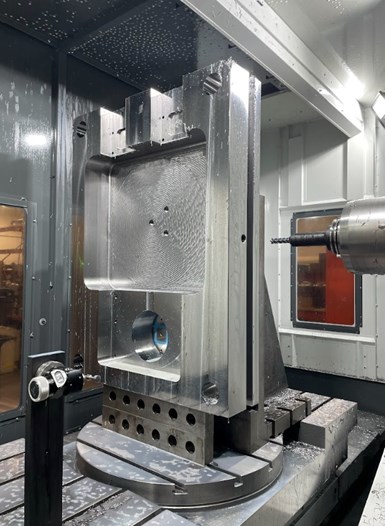
Each month, Machining Technology’s mold department generally produces three to four molds along with eight mold plates per mold, totaling up to 32 plates.
This acquisition comprises the mold department at Machining Technology, which offers a wide range of mold-related services such as plastic injection molds, die-cast tooling and mold design and engineering. The company has approximately 70 employees, with 12 — including three programmers — in its mold department and an experienced quality assurance team that supports its skilled operators with strict control protocols.
A Fresh Perspective
When Miguel Aponte joined Machining Technology in 2021 as vice president, he was asked to take an objective look at the mold department, which builds molds, mold plates and inserts using a combination of five- and three-axis machining centers.
“There were several areas that I wanted to focus on, including processing and delivery times, tool life and part quality,” Aponte says. “I thought evaluating a change in CAM software would be a logical place to start. hyperMILL from Open Mind Technologies was one CAM package that separated itself from the rest.”
However, it was not without skepticism that Aponte’s team was asked to embrace hyperMILL. “I understand that it can take more than a leap of faith to be willing to change programming habits that have been established for such a long time,” Aponte says. Fortunately, the advantages of switching to new CAM software did not require a leap of faith after all the benefits were revealed.
“We are taking advantage of the tool database in hyperMILL to speed up operations significantly.”
Proof in Productivity, Quality
“Open Mind understood that my team would need to see that the software was more capable and easy to learn,” Aponte points out. Open Mind provided a trial run along with its applications expertise every step of the way so Machining Technology could test it out before committing.

hyperMILL is a modular and flexible CAM solution for 2D, 3D and five-axis milling, mill turning and high-performance machining strategies with everything integrated into a single interface. This complete integration enables fast and easy programming using the latest operating concepts, reduced machining times and tool wear, improved process reliability and accurate, high-quality surface finishes.
After Open Mind and Aponte reviewed the application requirements, they selected the hyperMILL automation capability as a key strategy to reduce processing times drastically. However, this choice was not a simple one because it required the engineering team to change the manufacturing processes that were in place, which they had been following and were comfortable using. The new automation strategy had to show significant productivity advantages and be easy to learn.
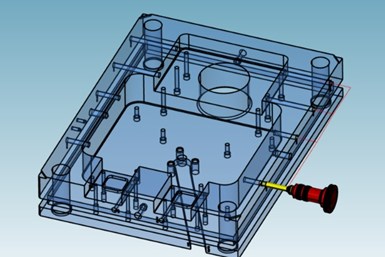
The hyperMILL automation strategy saves NC programs for holes and pockets in a feature-based macro database and applies and runs the script.
The hyperMILL automation strategy automates CAM programming for parts with similar geometries, such as component families and variants, recurring shape elements, features such as holes or pockets and repetitive processes to help reduce programming times, standardize processes, eliminate human error and improve overall throughput.
The feature technology automation makes it possible to read a component’s design properties relevant to the machining job. Geometry features such as holes and pockets are recognized automatically, and information relevant to the machining task is applied automatically. A macro stores a sequence of machining steps that contains all the tool and technology data of a characteristic geometry — the recognized features. Macros permit NC programming with just a few clicks of a mouse, greatly reducing programming efforts.
For example, a macro can be created for drilling operations that include a sequence of machining jobs such as centering, drilling and countersinking. This can then be used to program various hole types with a single click.

Machining Technology was able to reduce polishing and eliminate EDM burning when machining cavities using hyperMILL 3D strategies.
Machining Technology’s engineering team worked closely with Open Mind’s engineers to make the implementation successful. They determined that by applying the automation capabilities to part families, tool paths could be replicated to speed up processes.
“Using the hyperMILL automation capability on molds, mold plates and inserts, we were able to save NC programs for holes and pockets in a feature-based macro database and apply and run the script in an easily understood routine,” Aponte says.
Before implementing hyperMILL, it took about four hours to program and set up a plate. Now the same process takes approximately 45 minutes.
This worked very well because even though the applications are custom, the parts always have the same types of holes and threads, albeit with different diameters. “First, we select the hole types and operations needing to be performed by following the color-coding system, and then we save the toolpath strategy so that we can automatically repeat it for the next job,” Aponte explains. “Programming times were instantly reduced by 50% or even more, and we were amazed at how good the part quality was.”
Machining Technology’s programmers were impressed with the productivity improvements and felt comfortable with the learning curve, including a simple button press to run an automated routine. So, the decision was made to switch over to hyperMILL.
Time and Cost Saved
Every month, the mold department generally produces approximately three to four molds and eight mold plates per mold, totaling up to 32 plates. Most parts are tool steel, beginning at 24-34 Rockwell and hardened to 52-56 Rockwell in their final state. Processes that include reamers, boring heads and engravers are performed on the parts.
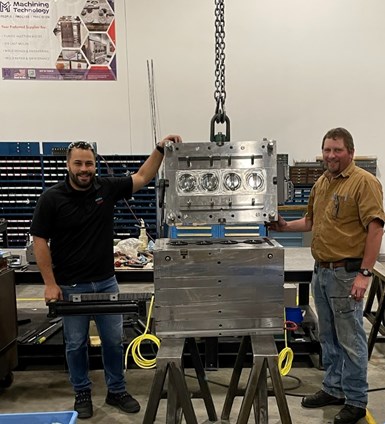
Machining Technology’s Vice President Miguel Aponte (left) and moldmaker Jason Vlasak (right).
“We are taking advantage of the tool database in hyperMILL to speed up operations significantly,” Aponte says. The powerful tool database supports tooling from leading cutting tool manufacturers and special tools can also be mapped in the tool database. Selecting suitable tools and cutting parameters for programming tool paths with 2D, 3D or five-axis strategies increases productivity.
Before implementing hyperMILL, it took about four hours to program and set up a plate. Now the same process takes approximately 45 minutes.
In addition to the programming and setup time reduction, the machining time was decreased. “The tool paths we generate now are smooth and streamlined, which improves part quality, increases the life of our tools and cuts down on machining time,” Aponte adds. One plate is now machined in 1.5 hours compared to 8 hours.
Since Machining Technology typically needs to hold dimensional tolerances ranging from ±0.0002 to ±0.001 for die-cast molds, hyperMILL needed to be capable of generating tool paths consistently and accurately. Simulation checks also use the generated NC code to precisely simulate movement sequences to ensure the highest degree of safety during manufacturing.
“Now, when machining cavities with the 3D strategies, we can reduce polishing and eliminate EDM burning that was previously required,” Aponte says.
Solid Support
Open Mind went out of its way to adapt a solution to Machining Technology’s needs — the software’s modular configuration and options mean they can configure the software how they want to use it. “Not only is my team pleased with hyperMILL because of its ease of use and reliability, but company executives are also fully on board because it has improved job profitability,” Aponte says.
As Machining Technology looks to the future and adds new five-axis machining technology, they now have the CAM software to move them forward.
Related Content
VIDEO:"The Smith Boys" on How Moldmaking is an Innovation Machine
"The Smith Boys" AKA President of DME Peter Smith and Director of Sales, Scott Smith discuss why the moldmaking industry is an innovation machine and how it is crucial to remedying global supply chain issues.
Read MoreMMT Ask the Expert: Hot Runner Benefits and the Fundamentals of Maintenance and Refurbishment
In this next portion of our “Ask the Expert” series, Husky’s Derrick Hennebicque answers some FAQs about the advantages of hot runner systems and refurbishment strategies. This episode is brought to you by Husky, Melt to Mold Precision.
Read MoreMaintaining a Competitive Edge: EDM, Automation and Machining Technology Roundup
This month’s technology roundup features products, processes and services relating to EDM, automation and machining. For example, jig grinding for large molds, scheduling automation software, cobot integration, die sinker EDM and much more.
Read More5 Ways to Make Your Tooling Assets Smarter
Global mold monitoring and asset management solutions can maximize productivity and efficiency.
Read MoreRead Next
Customized CAM Strategies Improve Five-Axis Blow Mold Machining
The proper machining process and workflow can impact blow mold production, making your CAM software selection critical.
Read MoreBroadening CAM Applications for Barrel Cutters
This alternative cutting tool geometry, along with the right CAM software, can help moldmakers reduce finish-machining times.
Read MoreThree CAD/CAM Automation Advances
Feature-, attribute- and script-based CAD/CAM automation ease programming and skilled labor challenges.
Read More

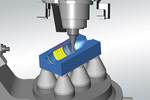
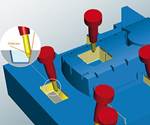
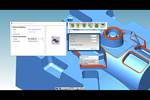








_300x250 1.png;maxWidth=300;quality=90)

.png;maxWidth=300;quality=90)


.jpg;maxWidth=300;quality=90)









